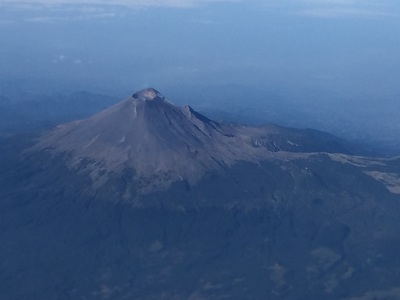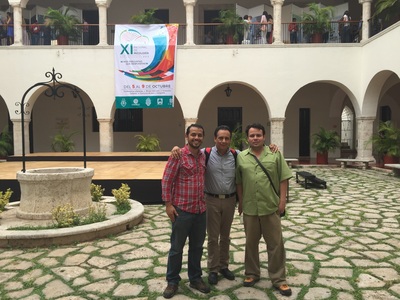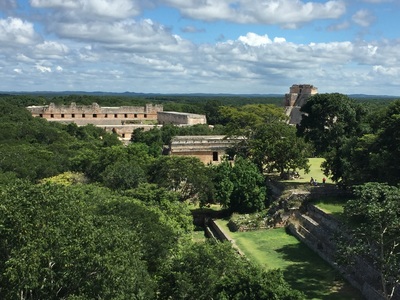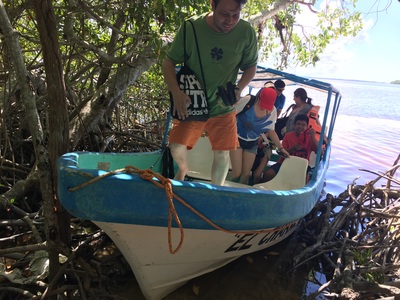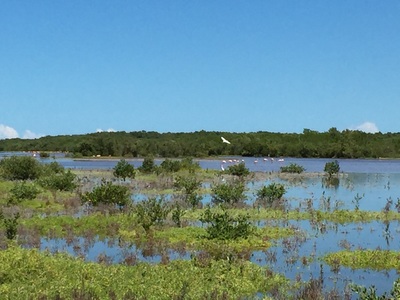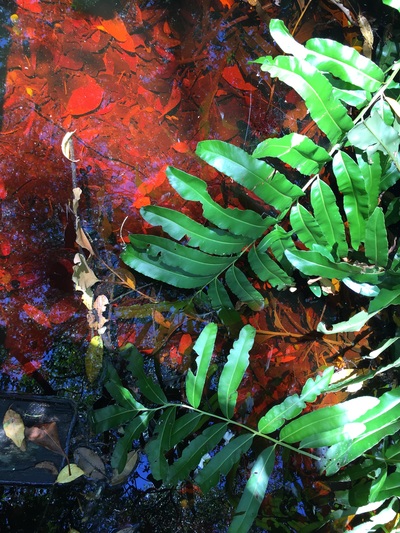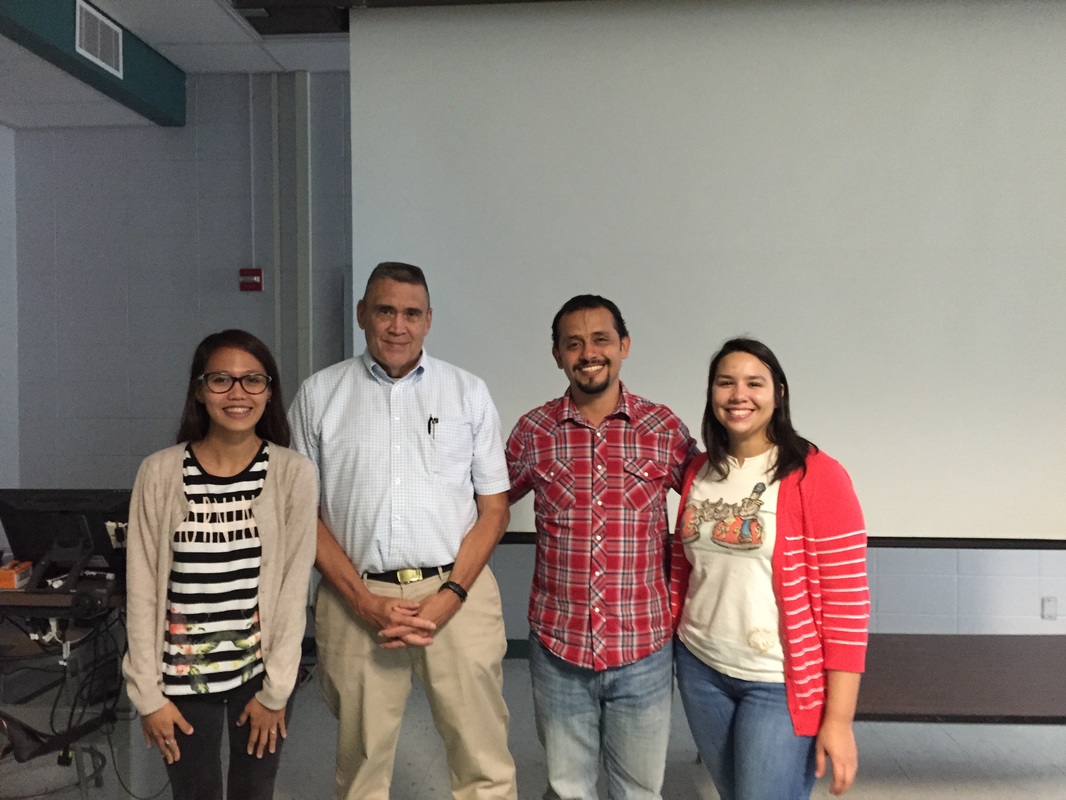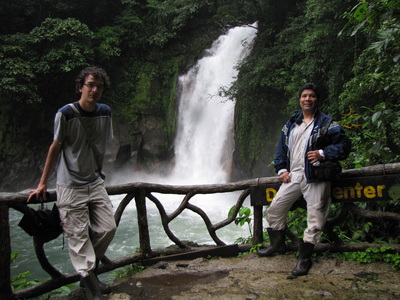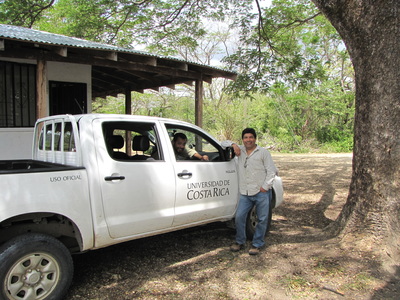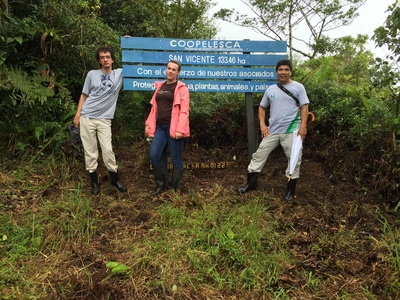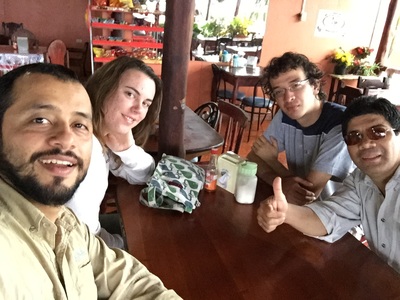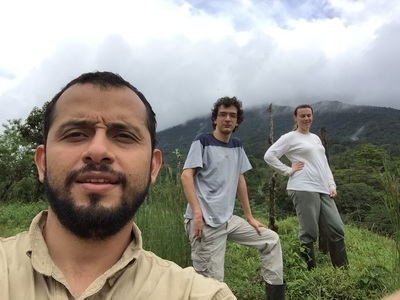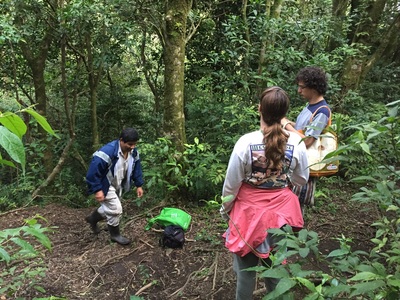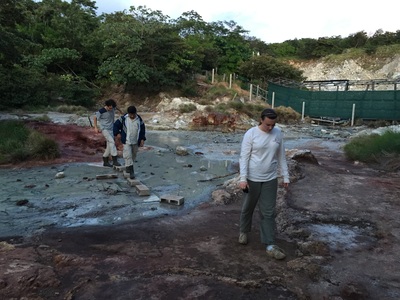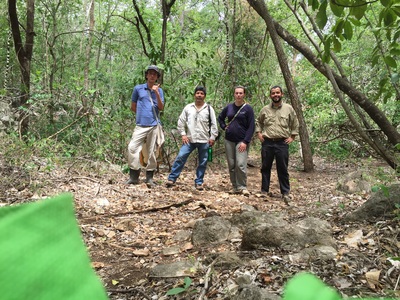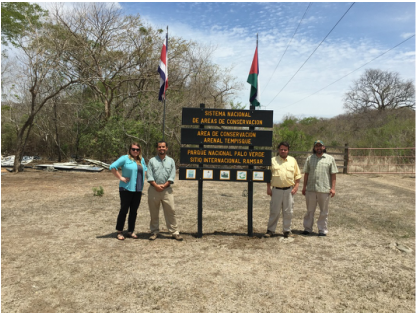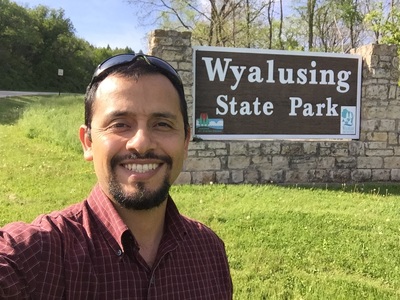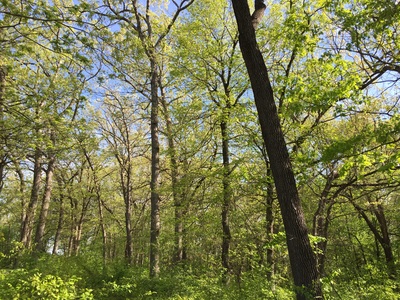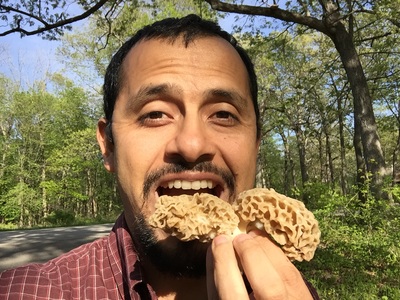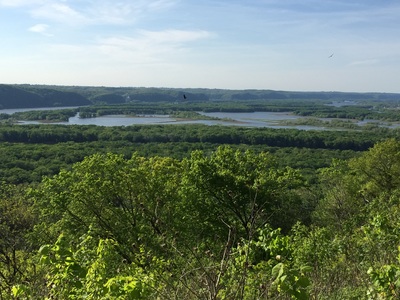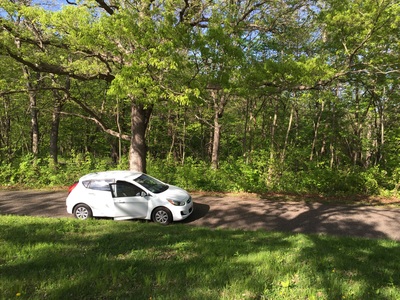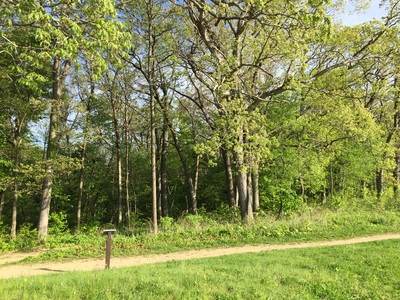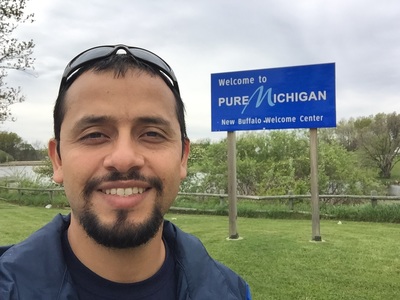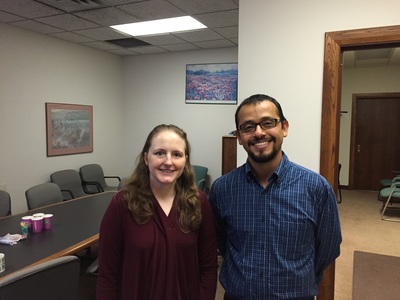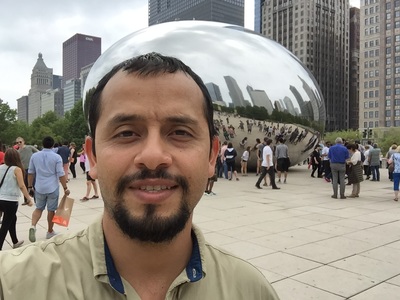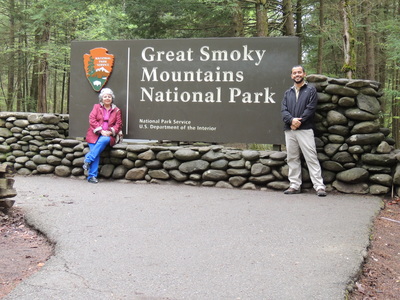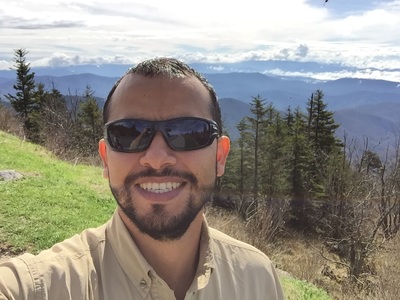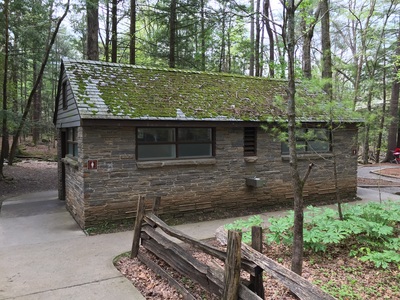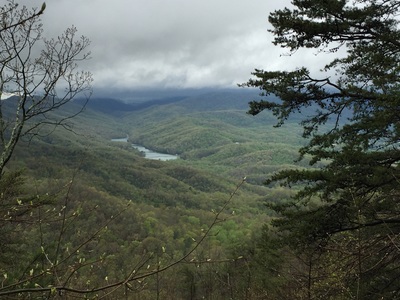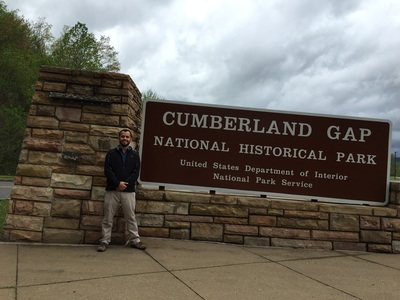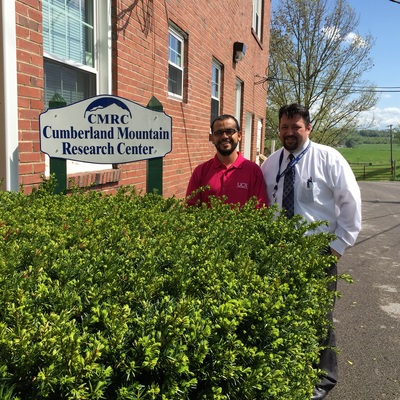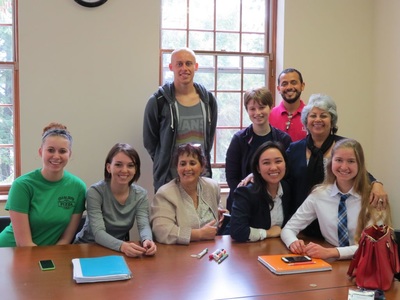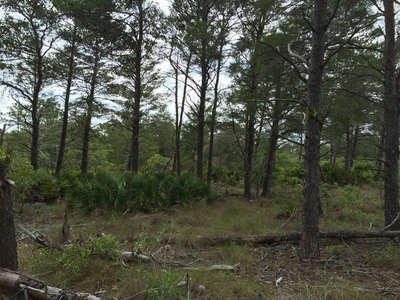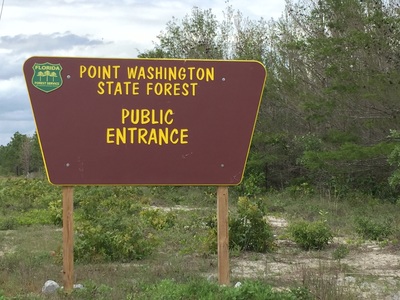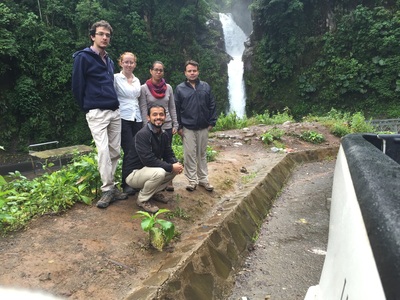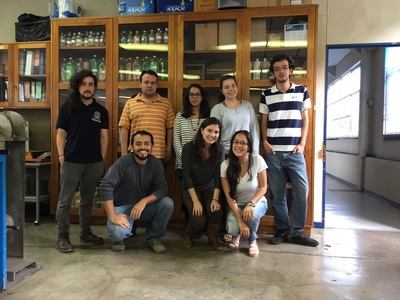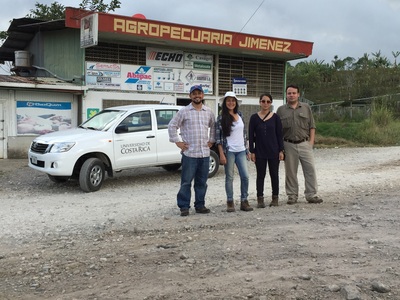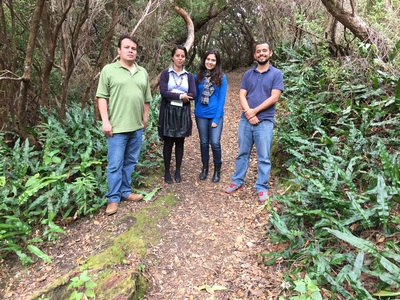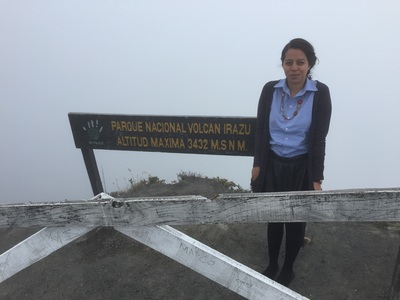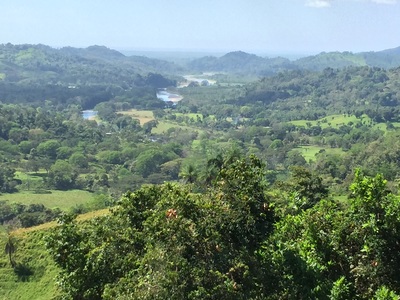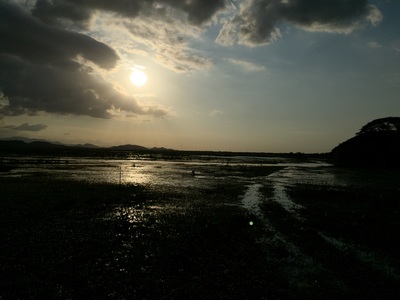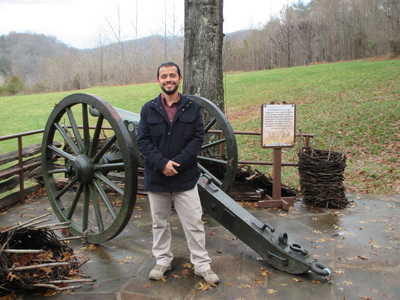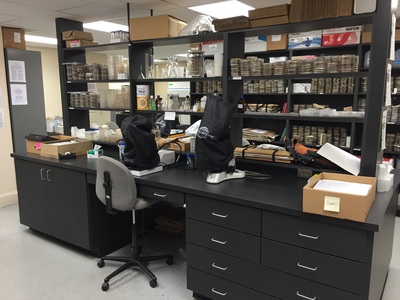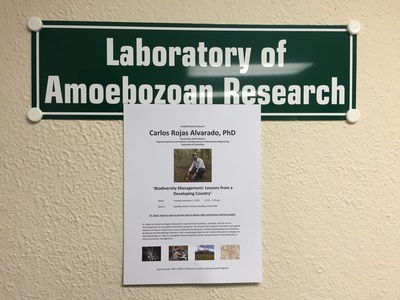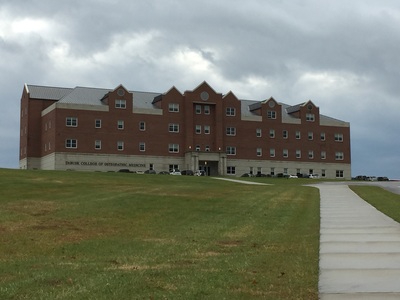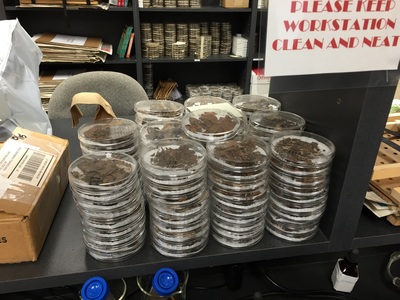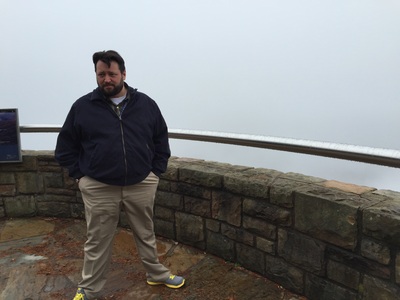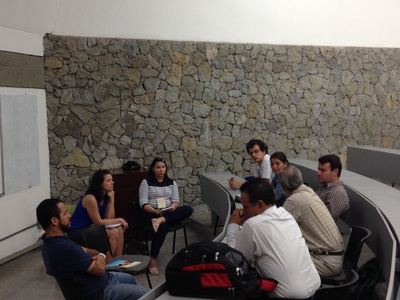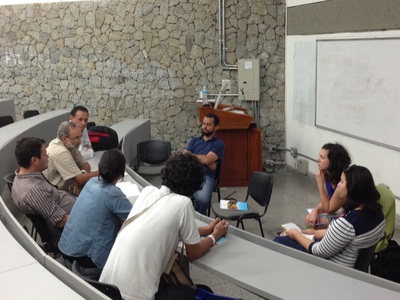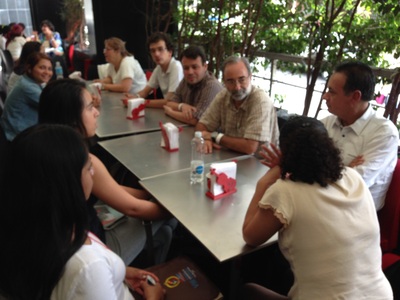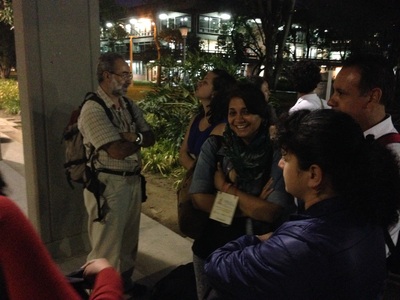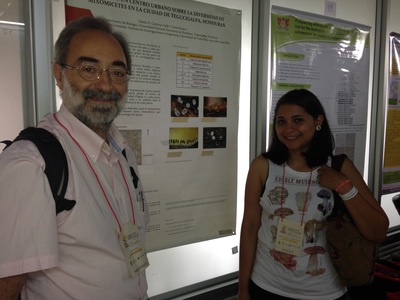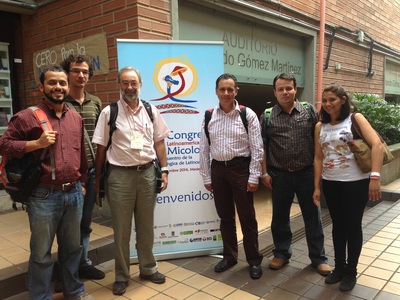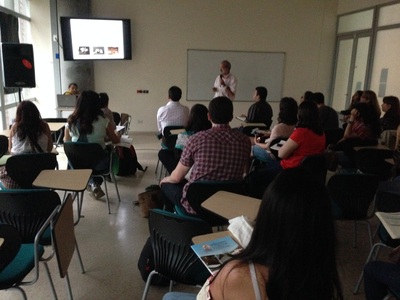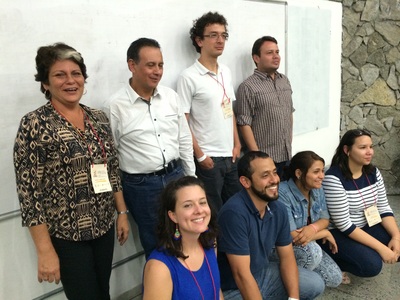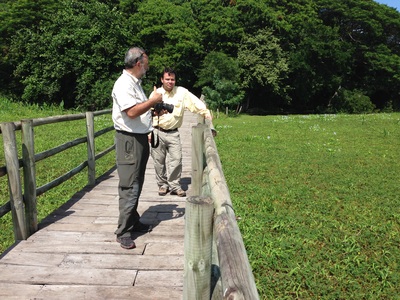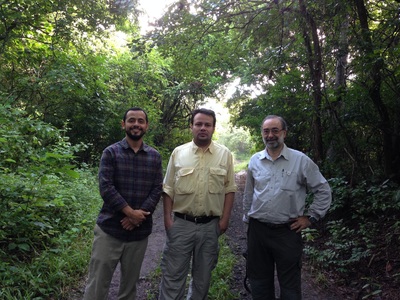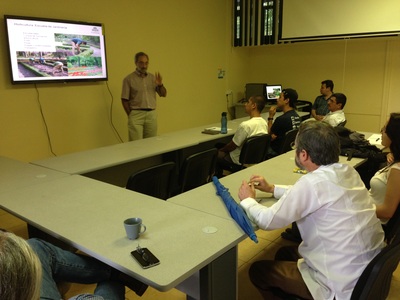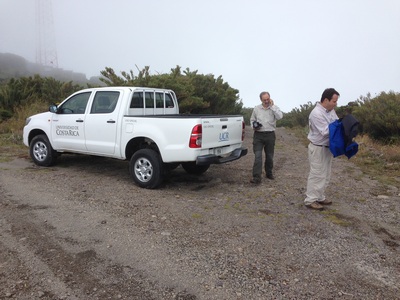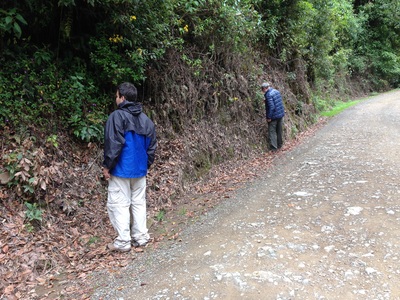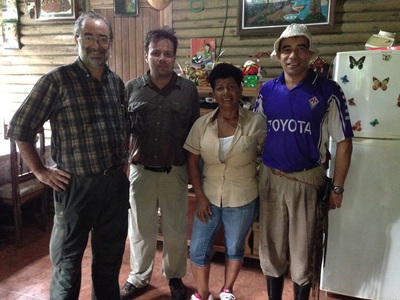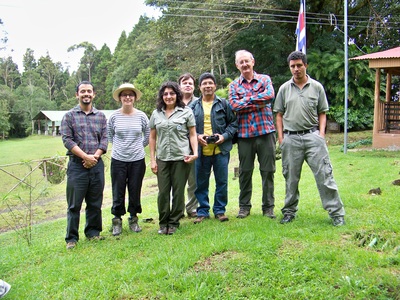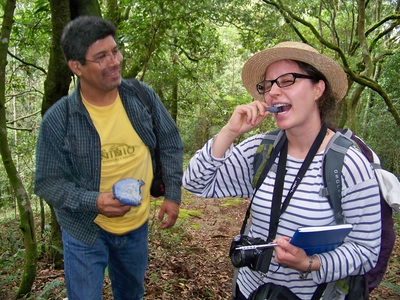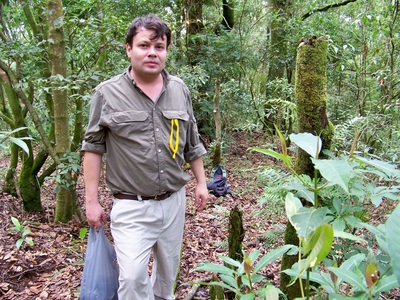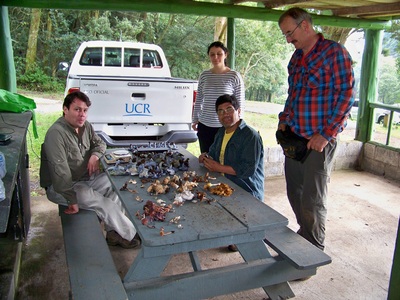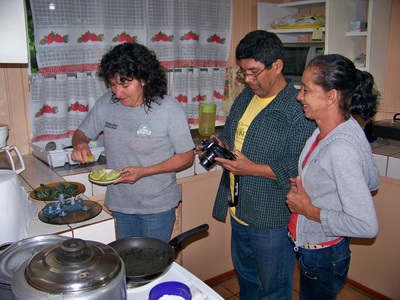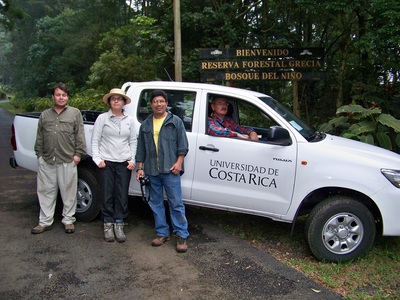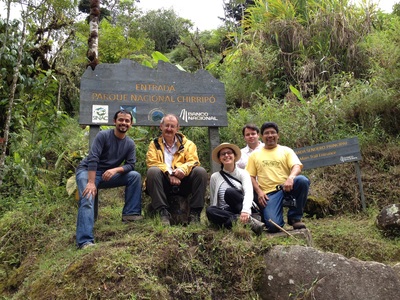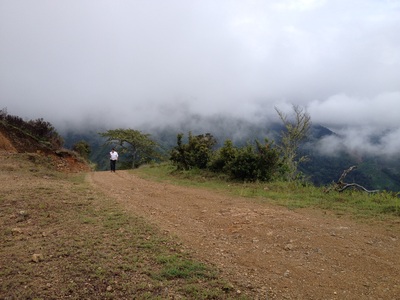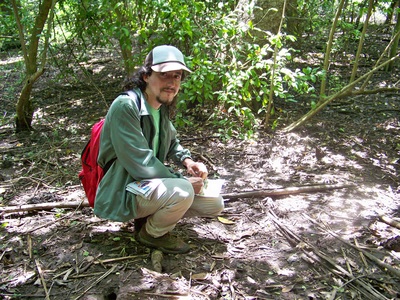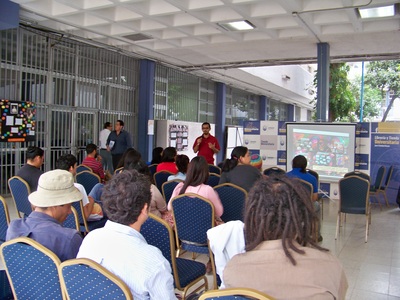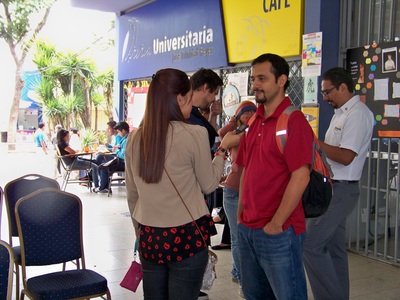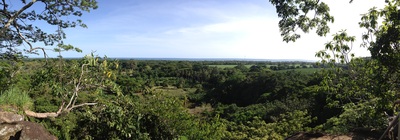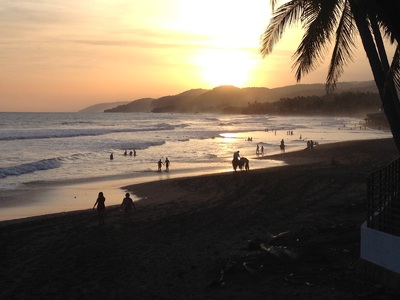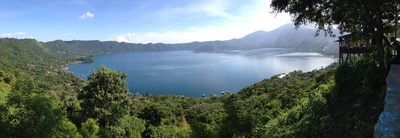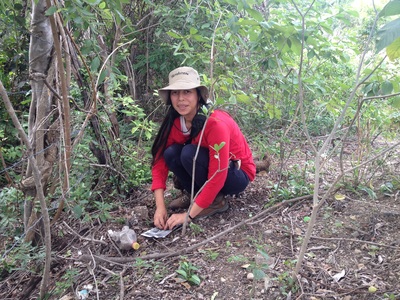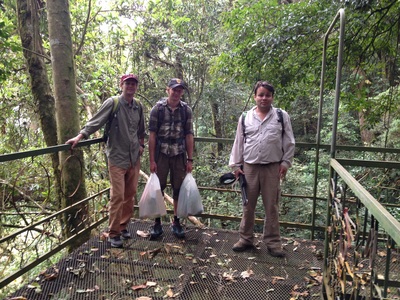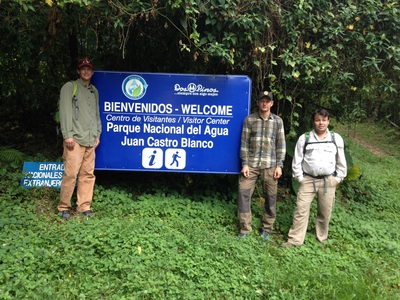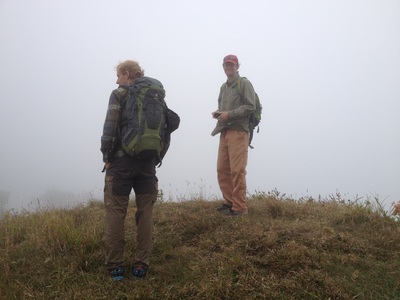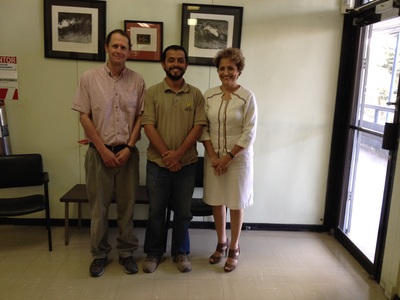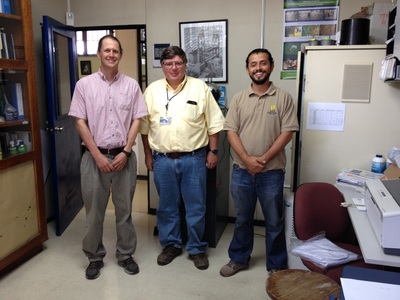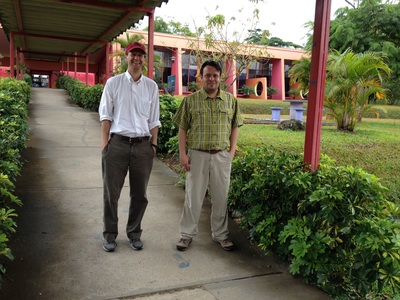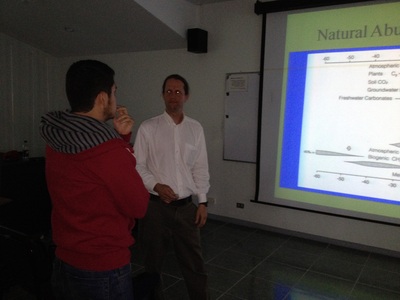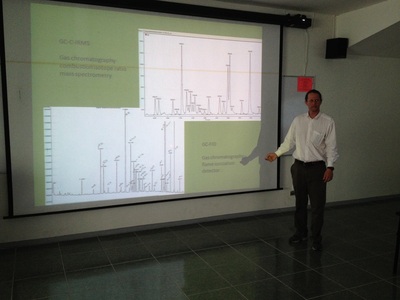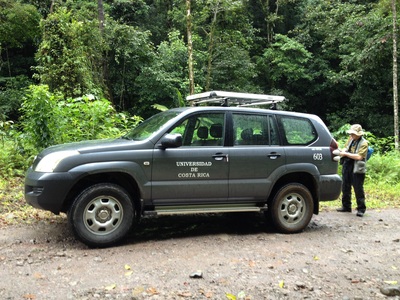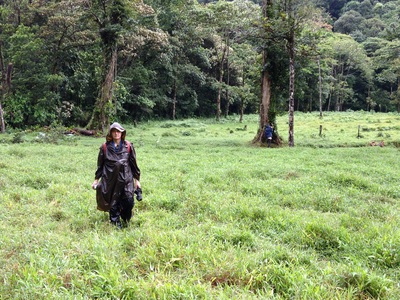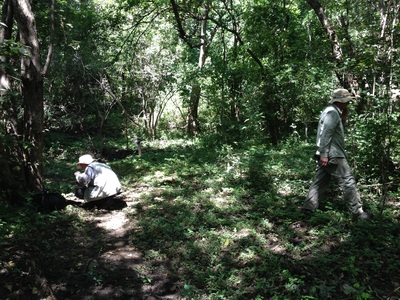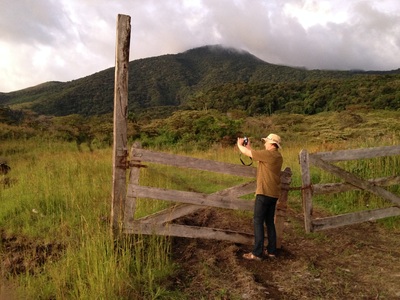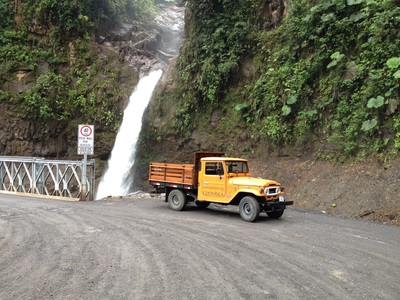|
Academic collaboration with Lindfield College
In a similar way to recent years, during the fall of 2015, Carlos Rojas participated with the Lindfield College study abroad group in Costa Rica, upon invitation from the program. This year, Carlos offered a talk on natural resources management and the role of public policy in shaping the complex network under which sustainability offers the possibility of proving real solutions to modern environmental problems. Providing examples from his academic context at the University of Costa Rica and the research carried out by his group of collaborators, Carlos tried to communicate the idea that under the conditions of development in the XXI Century, the notion of monodisciplinary performance is very much disconnected with the way we should be acting these days. November 2015 |
|
Yucatan Peninsula Visit
During early October, Carlos Rojas and Randall Valverde visited the Yucatan Peninsula in southeastern Mexico with the purpose of offering a talk on myxomycetes from Central America to the public of the XI Mexican Mycological Congress. Along with this activity, they visited the Celestún Biosphere Reserve in order to evaluate the possibility of establishing future projects on myxomycetes in this area in collaboration with colleagues from Mexico. One of the interesting aspects of the Biosphere Reserve was the red color of the mangrove water, which to this point was something neither of the people that visited such place had seen before. Celestún seems to be an interesting place for biogeographical analysis due the characteristics of the general area and the presence of what locals know as as "Ría" in the area. October 2015 |
|
|
University of Arkansas Seminar 2015
During September 2015, Carlos Rojas had the opportunity to go back to the University of Arkansas for a Departmental Seminar. His talk, entitled "Biodiversity Access in Costa Rica under the Nagoya Protocol", tried to inform researchers of that university of the processes toward biodiversity management implemented in Costa Rica during the last decade. Carlos used examples from Costa Rica observed in the last two decades and discussed the challenges, shortcomings and successes of the current local legislation designed to protect and manage biodiversity resources in that country. He also discussed the role of the Biodiversity Commission from the University of Costa Rica in the process of protection of natural capital. September 2015 |
|
International Collaboration 2015
During June, research collaboration from two international universities was received in Carlos Rojas´Lab. A professor from the University of El Salvador (Ricardo Morales) and a student from Lincoln Memorial University (Maggie Troyer) went on a collecting field trip with Carlos Rojas and Erick Solano from University of Costa Rica. During this expedition, the team collected material for joint research collaboration and obtained forest information in different forest patches along the Guanacaste Mountain Range and the Tempisque River Watershed. August 2015 |
|
|
Collaboration with faculty from Lincoln Memorial University
During late May and early June, Carlos Rojas received the visit of Dr. Catherine Benson from Lincoln Memorial University in the United States. Dr. Benson is a professor of wildlife management that has worked on the restoration of wetlands in eastern North America and this visit has been useful to evaluate different possibilities for collaboration with her. In particular, the development of academic courses on topics of common interest such as management of natural resources was discussed during this visit. Given the fact that this was Dr. Benson´s first visit the the Neotropics and to Central America, some other cultural and biological aspects were discussed during the visit. June 2015 |
|
US Midwest States Survey Trip
During the spring of 2015 a quick trip to the states of Wisconsin, Illinois, Indiana and Michigan in the United States was also carried out by Carlos Rojas. The main purpose of this trip was to visit potential study areas for forest research in North America. In particular, the potential of the Wyalusing State Park in western Winsconsin was noted. Such area is a beautiful forest patch surrounded by agricultural fields and may represent a refuge for the genetic diversity represented in the organisms present. As part of this trip, a visit to Michigan State University also served to visit researchers with ongoing projects in Costa Rica where potential collaboration is also possible. In the case of this trip, a good fish fry in rural Michigan did not have anything to envy to the best foods in that country. May 2015 |
|
|
US Southern States Survey Trip
Carlos Rojas visited a series of potential areas for myxomycete research in the Southern region of the United States during the spring of 2015. These areas included sites in the states of Georgia, Tennessee, Kentucky, Louisiana, Alabama, Mississippi and Florida. Hopefully in the near future potential collaboration can be found in order to develop some ideas for myxomycete research. As part of this trip, Carlos visited Dr. Adam Rollins in Lincoln Memorial University one more time and discussed with him a series of ideas for potential collaboration. Incidentally, as part of this visit, Carlos took advantage of Dr. Rollins´contacts and invited Dr. Catherine Benson to Costa Rica during the summer of 2015 (see later entry). This trip to the Southern states in the United States also gave Carlos Rojas the opportunity to visit particular ecosystems that because of his location in the tropics, had not been visited before. Collaterally, the great southern cuisine was a plus during this visit. April 2015 |
|
|
Central American Academic Collaboration
During the period between January and March of 2015, Paola Díaz, a student from the National Autonomous University of Honduras visited Carlos Rojas´Lab at the University of Costa Rica. During this time, Paola obtained experience on myxomycete research by implementing both field and laboratory protocols. This experience also served Paola as a turning point in her career since she decided to develop a research project on myxomycetes in Honduras. The latter would be the first project ever made by a Honduran on myxomycetes and given the fact that Paola decided to develop her idea in the islands of the Caribbean coast of Honduras, this project also represents a large contribution to the ongoing efforts of studying the Central American myxobiota. Hopefully, in the near future Carlos Rojas gets to visit Paola´s study sites in order to finish shaping her idea. March 2015 |
|
|
Collaborative visit to Lincoln Memorial University
During December 2014, Carlos Rojas was invited by professor Adam Rollins from Lincoln Memorial University in Harrogate, Tennessee to give a talk to his students on biodiversity management. Taking advantage of this situation, both researchers started a process of discussion in order to collaborate on myxogastrid research in the near future. This effort will likely start in 2015 and will include more than just research activity. The idea is also for students and faculty from both universities to experience shared activities as part of the initiative. Dr. Rollins and Carlos Rojas were laboratory mates at the University of Arkansas between 2005 and 2008 and still have many interests in common. Both have actively worked in Guanacaste, Costa Rica and the Smoky Mountains, which are the potential places for this project. December 2014 |
|
|
1st Latin American Symposium on Myxogastrid Research
in Colombia As part of the VIII Latin American Mycological Congress in Medellín, Colombia, Carlos Rojas organized the first symposium on myxogastrid research in Latin America. A large number of people attended such activity and all talks provided attendees and researchers the opportunity to share experiences toward a more integrated effort to study these organisms in the Neotropics. As part of the symposium, a satellite meeting among active researchers was also organized by Carlos Rojas in order to "think together" possible ways for collaboration and movement of research in Latin America in the direction of international trends. November 2014 |
|
|
Myxogastrid collaboration with an European counterpart
During Octuber-November 2014, Carlos Lado, a worldwide known myxogastrid researcher from the Royal Botanical Garden in Madrid, Spain visited Costa Rica with the main objetive of establishing a collaborative link with Carlos Rojas at the University of Costa Rica. This visit was sponsored by the International Affairs Office of the latter university and served as the basis for discussion on possibilities for future research in Costa Rica. It is very likely that starting in 2015, a research link among this group is formally established with the idea of collaborating during the near future. November 2014 |
|

Academic collaboration with Lindfield College
Lindfield College from Oregon has a study abroad program in San Ramón, Costa Rica where Carlos Rojas collaborated as a professor in 2012. Due the existing link between such program and this professor, during the fall 2014, Carlos offerred two talks on sustainable energy production and gene markets for the students to listen to the position of an academic in a developing context. During these talks ReForesta researcher Randall Valverde supported the positions from an outside of the US perpective, thus providing the American students the opportunity to develop their own positions from a more complex experience.
October 2014
Lindfield College from Oregon has a study abroad program in San Ramón, Costa Rica where Carlos Rojas collaborated as a professor in 2012. Due the existing link between such program and this professor, during the fall 2014, Carlos offerred two talks on sustainable energy production and gene markets for the students to listen to the position of an academic in a developing context. During these talks ReForesta researcher Randall Valverde supported the positions from an outside of the US perpective, thus providing the American students the opportunity to develop their own positions from a more complex experience.
October 2014
|
Notes from the Miravalles Volcano area
During the dry period in Costa Rica the mountain tops along the different mountain ranges experience rains as part of the condensation of moisture carried out in the east trade winds. One of those tops occurs in the Miravalles Volcano un Guanacaste, Costa Rica where Carlos Rojas experienced the consequences of such rain-wind influence. The interesting part of this phenomenon is that just 10 min away from these areas, the weather changes dramatically and looks more what most people conceive as a dry period in a tropical country. December 2014 |
|
|
Notes from the Tenorio Volcano area
The upper parts of Guanacaste in Costa Rica are very interesting from different points of view. However, there is a large number of people that do not recognize the fact that these areas look and feel different than the typical lowland elevation zones in the driest part of Costa Rica. The Tenorio Volcano is a very interesting area between Guanacaste and Alajuela that receives a lot of tourism but still has little research on management issues. In this short video, Carlos Rojas talks about the future of ReForesta research in this area for the upcoming years. December 2014 |
|
|
Notes from a lowland oak forest
Most naturalists in Costa Rica and other areas in the Neotropics are used to the fact that oak forests tend to be higher elevation ones. Of course that is not the case for all oak species since there are some ones that specialize in lower elevation areas. In the case of Costa Rica, the Guanacaste area is an example of the latter due the fact that Quercus oleoides occurs in those areas. In this short video, Carlos Rojas talks about the relationship between some of these forests and the ecology of myxogastrids. October 2014 |
|
|
Notes on Amanita muscaria from the high elevations in Costa Rica
For a nature observer it is always nice to see the mushroom Amanita muscaria in the field. Due to the historical and widespread consumption of this fungus across the planet, it is one of the few species that most people recognize around the world. In Costa Rica its distribution is limited to high elevations where host ectomycorrhizal trees also occur. In a short video, Carlos Rojas talks briefly about this mushroom and the hallucinogenic effect. October 2014 |
|
|
Exchange of research experiences toward the understanding of fungi and bryophytes in the Neotropics
Philippe Clerc and Gabriela Loza are researchers from the Botanical Gardens of the city of Geneva in Switzerland, who started a project on lichen and moss diversity along with Carlos Rojas in September 2014. Taking advantage of their presence in the country, professor Ricardo Morales from El Salvador and researcher Randall Valverde from Costa Rica got together and organized a series of field activities to exchange research experiences (watch video in Spanish) with national park rangers and local communities. In the Grecia Forest Reserve, the group organized a fungal survey and professor Morales showed rangers the traditional way of cooking wild mushrooms in northern Central America. In the mountains of Chirripó on the Talamanca Range, the group surveyed local communities for future involvement and organized educational activities with the rangers of Chirripó National Park. September 2014 |
|
|
Developing mycological studies and supporting regional institutions in the Central American region
During August 2014, Carlos Rojas and his research assistant Juan Miguel Zúñiga visited El Salvador and Honduras in order to support local efforts for the development of mycological studies in the region. Historically, both coutries have lacked systematic investigations on fungal and protist diversity. In El Salvador, the work was developed along with professor Ricardo Morales from the "Facultad Multidisciplinaria de Occidente" of the University of El Salvador collecting material for myxomycete research in the La Libertad and Santa Ana regions (watch video in Spanish). In Honduras, efforts were carried out along with professors Gustavo Cruz and Carolina Alduvín from the National Autonomous University of Honduras in the Yuscarán region. August 2014 |
|
|
Stable isotope related assessment for future projects on nutrient dynamics in tropical forests
During April 2014, Carlos Rojas received the visit of Eric Pollock, manager of the Stable Isotope Lab at the University of Arkansas. The idea of this visit was to evaluate the possibility of establishing a long term project on nutrient dynamics in Costa Rica in which isotopic fingerprinting can be used as a way to evaluate movement of nutrients within the system. Eric´s visit included a number of activities that ranged from formal talks offered at the University of Costa Rica to mountain walks in the Juan Castro Blanco National Park and meetings with university faculty. All these activities were facilitated by the Forest Resources Unit (ReForesta) and sponsored by the International Affairs Office at the University of Costa Rica. May 2014 |
|
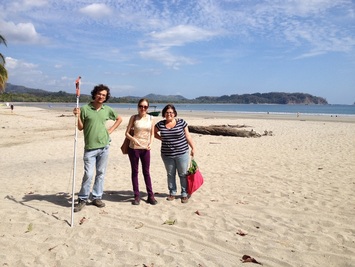 Erick Calvo, Carla Valdéz and Melissa Mardones
Erick Calvo, Carla Valdéz and Melissa Mardones
Collaboration with local fungal research initiatives through inter-institutional links
During February and March 2014, Carlos Rojas helped fungal research projects in Costa Rica through a scheme of inter-institutional collaboration. The main point of this joint effort is to increase the knowledge of poorly studied groups on fungi for the Costa Rican territory.
As part of this initiative, Carlos collaborated with Melissa Mardones (right in the picture) a doctoral student at the Frankfurt an Main University in Germany and Carla Valdés (center) a grad student from the University of Nuevo León in Mexico. Part of this collaboration considered the involvement of local students such as Erick Calvo (left), a research assistant at Carlos´lab.
February 2014
During February and March 2014, Carlos Rojas helped fungal research projects in Costa Rica through a scheme of inter-institutional collaboration. The main point of this joint effort is to increase the knowledge of poorly studied groups on fungi for the Costa Rican territory.
As part of this initiative, Carlos collaborated with Melissa Mardones (right in the picture) a doctoral student at the Frankfurt an Main University in Germany and Carla Valdés (center) a grad student from the University of Nuevo León in Mexico. Part of this collaboration considered the involvement of local students such as Erick Calvo (left), a research assistant at Carlos´lab.
February 2014
|
Notes from the Monteverde Area in Costa Rica
During January 2014, Carlos Rojas visited the highly ecotouristic area of Monteverde in Costa Rica in order to study the factibility of establishing a research/educational program there. Even though the area is highly visited by tourists from different parts of the world, it still contains a series of interesting elements for the development of educational programs in the areas of forest management and sustainable economy. The notes on the video are just part of the ideas that can be used to establish the program mentioned earlier January 2014 |
|
|
Basic Mycology workshop offered at the National Autonomous University of Honduras in September 2013.
This workshop was an academic collaboration of Carlos Rojas from the University of Costa Rica and professors Carolina Alduvín and Gustavo Cruz from the National Autonomous University of Honduras The workshop counted on 15 students, mostly undergrads, who wanted to learn the basics of mycology in a Central American context. Three of the students in this workshop visited Costa Rica on a short-term stay intended to design collaborative projects in Honduras. These projects are currently being carried out and will continue during the 2014 year. August 2013 |
|
|
Site assessment for suitability of academic exchange and joint research collaboration
During November 2013, Carlos Rojas along with professors Martin Schnittler from the University of Greisfwald in Germany and Yura Novozhilov from the Komarov Botanical Garden of Russia, visited the Guanacaste Mountain Range and made agreements with National Parks in the area. The idea of this effort is to bring European students on fellowships to Costa Rica (under Rojas' guidance) in order to collaborate with joint research initiatives . National Parks will be benefited with optical equipment for basic scientific research. November 2013 |
|
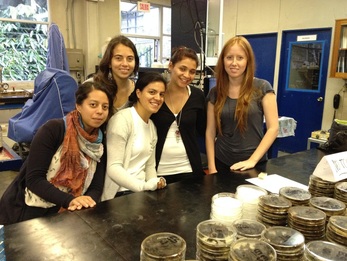 Paola Díaz, Irene Calderón, Belquis Lemus, Nathaly Cardona and Stephanie Somerville
Paola Díaz, Irene Calderón, Belquis Lemus, Nathaly Cardona and Stephanie Somerville
Short-term training for Honduras students in University
of Costa Rica´s Forest Resources Unit
In September 2013, three biology students from the National Autonomous University of Honduras visited Costa Rica to receive further training on myxogastrid research.
These students visited the research areas that Carlos Rojas has in Costa Rica and spent time at the University of Costa Rica designing research projects to be carried out in Honduras during 2014.
This initiative has been mostly covered with personal funds from all people involved. However, it has been suppported by the Forest Resources Unit (ReForesta) through internal funds from the "venta de servicios" activity.
June 2013
of Costa Rica´s Forest Resources Unit
In September 2013, three biology students from the National Autonomous University of Honduras visited Costa Rica to receive further training on myxogastrid research.
These students visited the research areas that Carlos Rojas has in Costa Rica and spent time at the University of Costa Rica designing research projects to be carried out in Honduras during 2014.
This initiative has been mostly covered with personal funds from all people involved. However, it has been suppported by the Forest Resources Unit (ReForesta) through internal funds from the "venta de servicios" activity.
June 2013
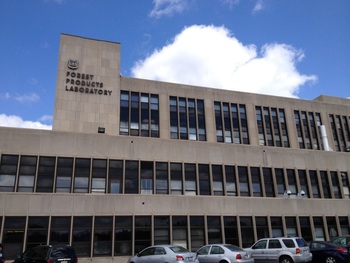 Forest Products Lab in Madison, Wisconsin
Forest Products Lab in Madison, Wisconsin
Visit to the Northern Midwest in the United States for involvement on research initiatives
During May 2013, Carlos Rojas visited the states of Wisconsin, Illinois, Indiana and Michigan in order to identify potential areas and topics for joint research.
Part of the idea of establishing a link with the area was materialized in the form of visiting the Forest Products Laboratory in Madison, Wisconsin where Carlos had a chance to sit down with multiple researchers and collaborators. These meetings provided very important feedback for the process of modernization of research lines, infraestructure and administrative makeup in the Forest Products Lab at the University of Costa Rica.
As a result of this meeting, the mentioned lab in Costa Rica entered a renovation process that ended up even changing its name to Forest Resources Unit. This new name reflects in a better way the types of activities that researches carry out on a regular basis.
May 2013
During May 2013, Carlos Rojas visited the states of Wisconsin, Illinois, Indiana and Michigan in order to identify potential areas and topics for joint research.
Part of the idea of establishing a link with the area was materialized in the form of visiting the Forest Products Laboratory in Madison, Wisconsin where Carlos had a chance to sit down with multiple researchers and collaborators. These meetings provided very important feedback for the process of modernization of research lines, infraestructure and administrative makeup in the Forest Products Lab at the University of Costa Rica.
As a result of this meeting, the mentioned lab in Costa Rica entered a renovation process that ended up even changing its name to Forest Resources Unit. This new name reflects in a better way the types of activities that researches carry out on a regular basis.
May 2013

